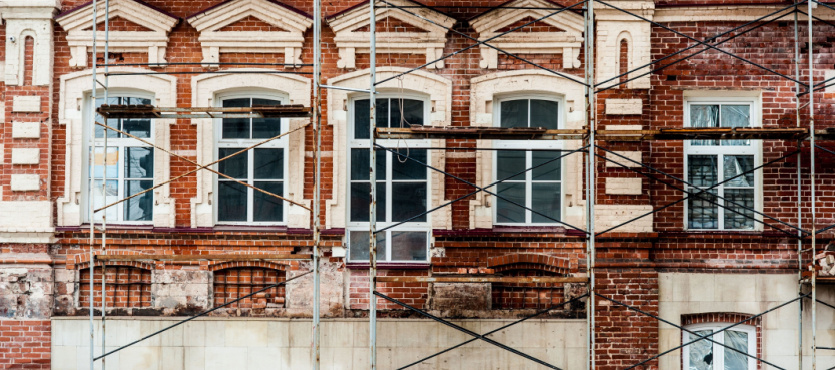Restoring historic masonry buildings can be a complex and rewarding endeavor, but it comes with its fair share of challenges. These buildings often hold cultural and architectural significance, and their restoration requires a delicate balance between preserving their historical integrity and ensuring their long-term structural stability.
Restoring historic masonry buildings requires a multidisciplinary approach, careful planning, and a commitment to preserving our architectural heritage. While it can be challenging, the preservation of these buildings contributes to the cultural richness and historical identity of communities.
Challenges Associated with Restorations
- Historical Authenticity
Maintaining the historical authenticity of the building is paramount. This means using materials and techniques that match the original construction as closely as possible. Extensive research and documentation are essential here. Archival records, old photographs, and historical documents can provide valuable insights into the building’s original design and materials.
- Structural Integrity
Many historic masonry buildings suffer from structural issues due to age, weathering, and poor maintenance. You must consult with structural engineers to assess the building’s stability. Repairs may involve reinforcing the existing structure with steel supports, repairing or replacing damaged masonry, and addressing foundation issues.
- Masonry Deterioration
Over time, masonry can deteriorate due to moisture, freeze-thaw cycles, pollution, and other factors. Properly restore damaged masonry by repointing (replacing mortar), consolidating deteriorated bricks or stones, and cleaning the facade using gentle methods to avoid further damage.
- Matching Materials
Finding matching historic materials, such as bricks, stones, or decorative elements, can be challenging because some materials may no longer be available or may be prohibitively expensive. Work with specialists who can replicate materials or source reclaimed or salvaged materials that closely match the original.
- Regulatory Approvals
Navigating local building codes and preservation regulations can be time-consuming and complex. Engage with preservation organizations, local historic commissions, and experts who are experienced in dealing with regulatory requirements. They can help guide you through the approval process.
Solutions From Experts
- Comprehensive Planning
Begin with a thorough assessment and planning phase that includes research, documentation, and a detailed restoration plan. This plan should outline the project’s scope, timeline, and budget.
- Specialized Professionals
Hire experts in historic preservation, including architects, masons, archaeologists, and conservators. They can provide valuable insights and ensure the project meets preservation standards. Familiarize yourself with local, state, and national historic preservation regulations. Obtain any necessary permits and approvals before starting the restoration project.
- Conservation Techniques
Utilize conservation techniques rather than complete reconstruction when possible. This approach preserves the historic fabric of the building. You can also gather historical photographs, documents, and architectural drawings to understand its original appearance.
- Regular Maintenance
Implement a maintenance plan to ensure the building’s long-term preservation after restoration. Routine inspections and upkeep can prevent future deterioration.
- Community Engagement
Engage with the local community and preservation organizations to build support and foster a sense of ownership in the project.
- Adaptive Reuse
Consider adaptive reuse options to ensure the building remains economically viable while preserving its historical significance.
- Sustainability
Integrate sustainable practices into the restoration process, such as energy-efficient windows, insulation, and HVAC systems, to reduce the building’s environmental impact.
- Documentation
Maintain thorough records of all work performed, including photographs, drawings, and materials used, to facilitate future maintenance and research.
An Experienced Team for Historic Restorations in Toronto
Restoring historic masonry buildings involves addressing numerous challenges related to materials, structural integrity, historical accuracy, and regulatory compliance. Such projects require professionals with specialized skills who are committed to preserving these valuable cultural assets for future generations, such as Turnbull Masonry. We are the most trusted team of masons in the Toronto area. To learn more about our services, speak with one of our experts today!

